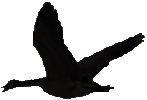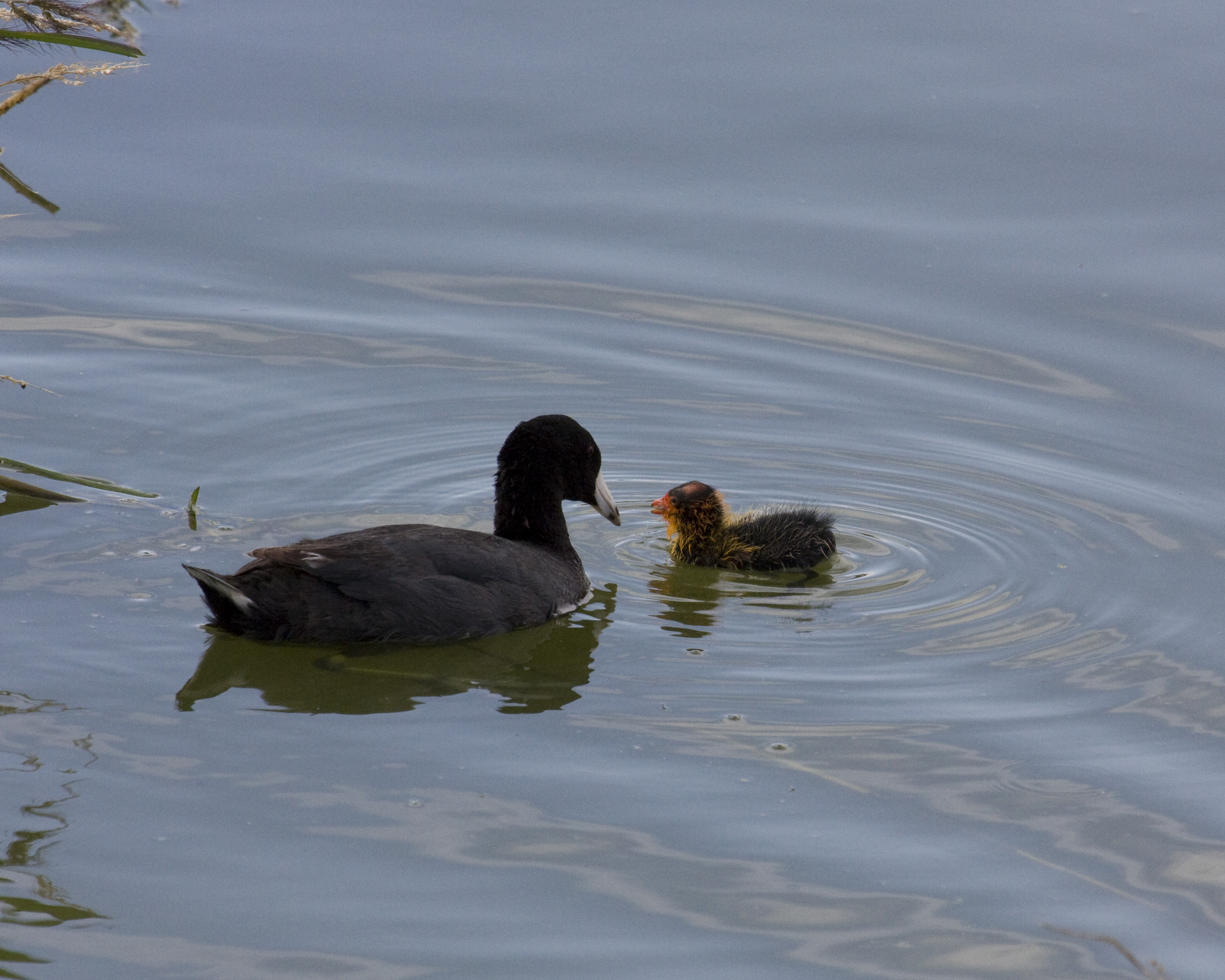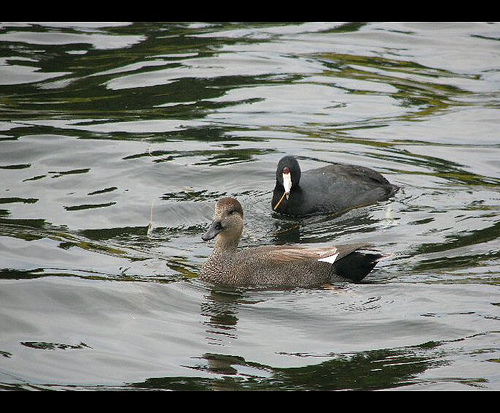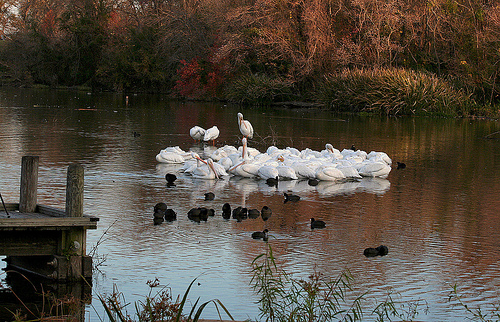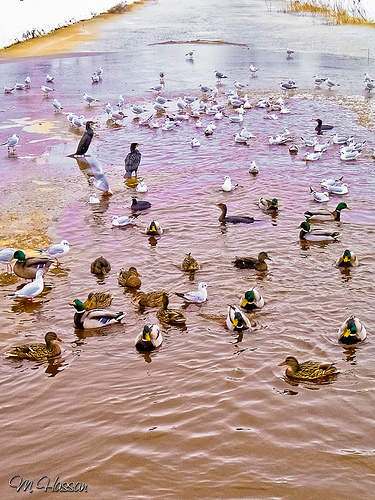Interactions
The American Coot is a territorial bird especially when it comes to a male looking out for his nest and eggs. There are different interactions between other organisms in its habitat and different interactions between other American Coots. To see a list of other organisms that could be found in the same habitat as the American Coot click here. Some of the relationships towards others are not so friendly so keep reading if you would like to learn more.
One of the more aggressive patterns of the Coot is when the Coot goes into a patrolling position. This is used frequently when the bird believes it or its territory is threatened by another Coot or even another animal. In this pose the head is down and tail low in a position that is ready to pounce like a cat at any sign of danger. Some species of ducks can recognize and respect this gesture along with other American Coots and when they see it they know to back off. If an organism does not recognize the patrolling position the Coot will go into a charging position. Here the neck is stretched out horizontally in one plane and the bird swims quickly in the water leaving behind a prominent wake. Another form of the charge is the splattering gesture. Here the Coot will still have its neck in a horizontal plane and stretched out except this time the Coot will be running on top of the water with its wings spread out and chasing the other organism away. In the picture below you can see the Coot to the right is chasing the bird to the left in a splattering position.
The next gesture is fighting which, as you can probably guess, is
violent. Some cases of fighting have resulted in death of one
of the participants. Fighting is the very last step taken in
aggressive behavior between American Coots. In this position
the birds are propped up on their tail feathers and claw at each
other with the feet while in the water. If the birds get a
chance they will poke at their opponent with the bill but usually
just end up with a beak full of feathers. As the losing bird
becomes weaker it is forced onto its back and usually escapes the
fight by diving underwater and swimming away. As you can see
in the picture below fighting between Coots is anything but nice.
The last type of interaction I will introduce you to is a very
unique one and recently discovered. A group of researchers in
2003 proved that American Coots can count their own eggs and reject
the ones that are not theirs. If American Coots feel their
nest is too full or they do not have one they will end up laying
their eggs in another Coot's nest. The Coots cannot tell the
foreign egg is not their own but when the baby Coot hatches and it
does not belong to that parent the parents will violently dispose of
the foreign baby bird. Violently dispose you say? Yes,
the adult Coots will attack the newborn Coots usually picking them
up by the beak and violently shake the baby until it does not move.
Death is the only option and starving the baby birds to death is too
kind according to the American Coots. This act is called brood
parasitism. This process occurs by having the first brood
being the template for the following broods. It is not quite
understood how the adult Coots can recognize their own young since
to you and I all Coots might look the same. The understanding
of this process is that there is limited food supply all around the
world and if a foreign chick was to receive food instead of a chick
of that parent, the chick of the parent would die and the
"parasitic" chick would survive. This is a strong defense for
parents protecting their brood each year. The best chance for
young chicks to survive is for the adult Coots to make their own
nest and protect their eggs at all costs.
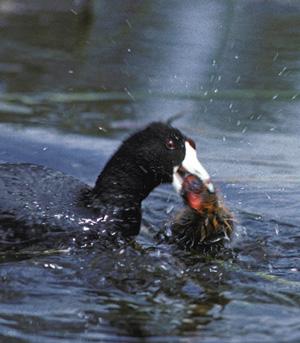
The interesting thing about brood parasitism is that it does not
work for chicks of different species. It is not quite
understood but cowbirds and cuckoos that are hatched with the coots
are not violently rejected like parasitic American Coot chicks.
This is an interesting find because so many different species,
especially cowbirds and cuckoos, are always found laying their eggs
in foreign nests. As you can see in the picture at left the
adult Coot found a parasitic chick in its nest and is making sure it
does not stay mixed in with its own brood.
In several cases though the American Coots live peacefully with
other organisms, especially other bird species in the water.
As long as neither species feels threatened life is good for the
Coots. Take a look at the pictures below at the more calm
interactions between the American Coots and other organisms.
Also check out the Habitat page and the
Gallery for even more pictures!
Click here to learn about Coot reproduction.
Click here to check out some cool facts.
